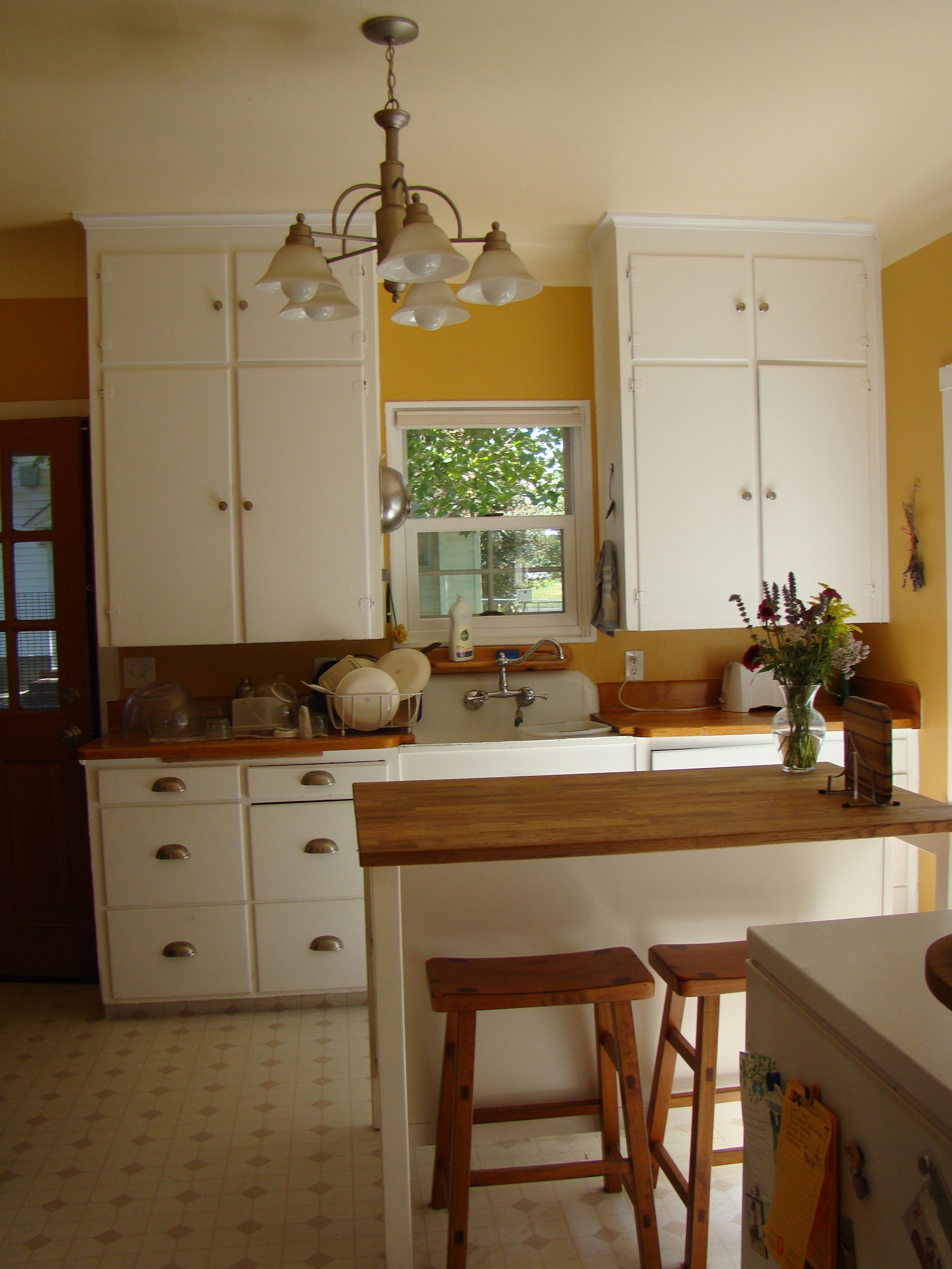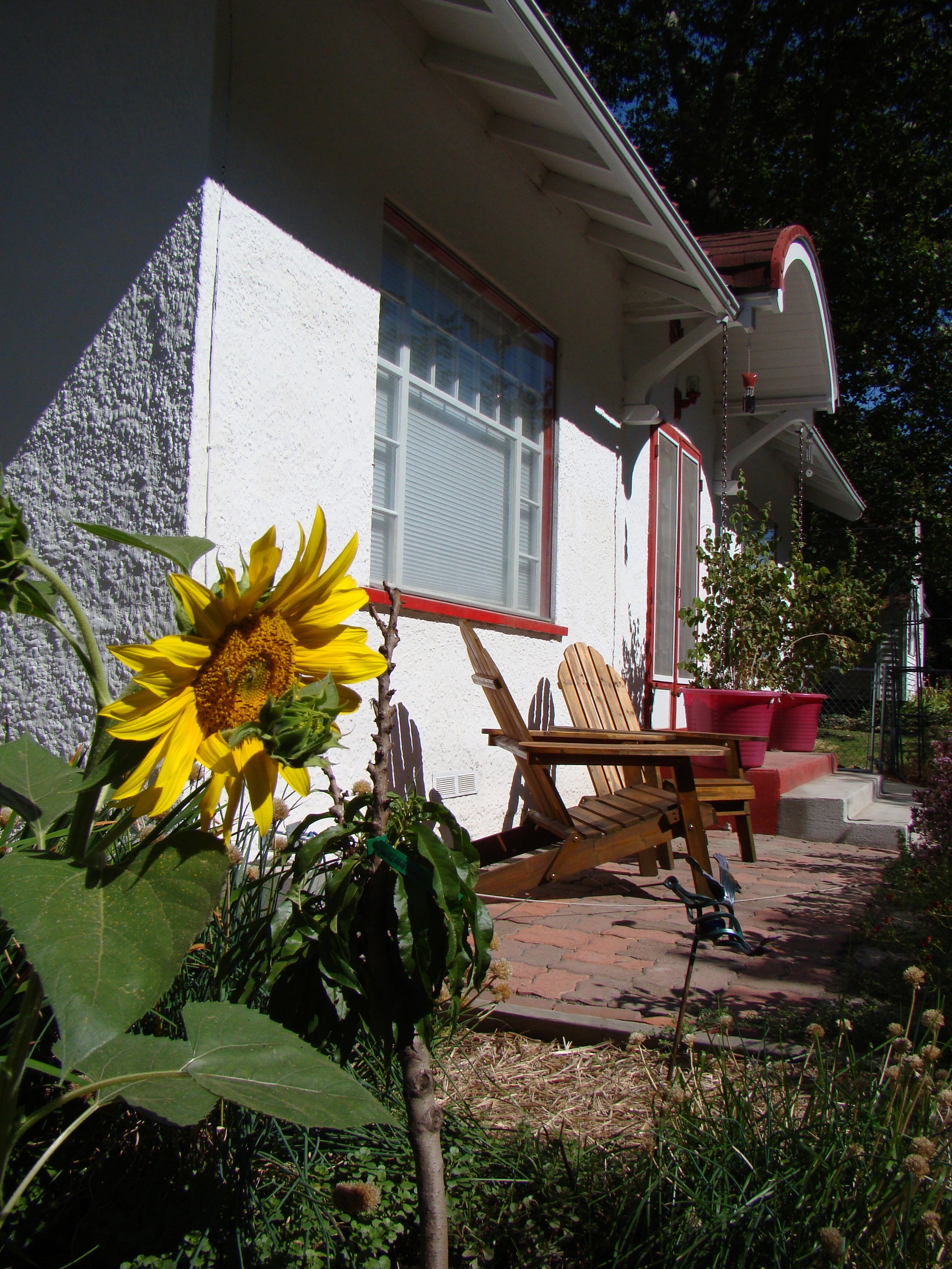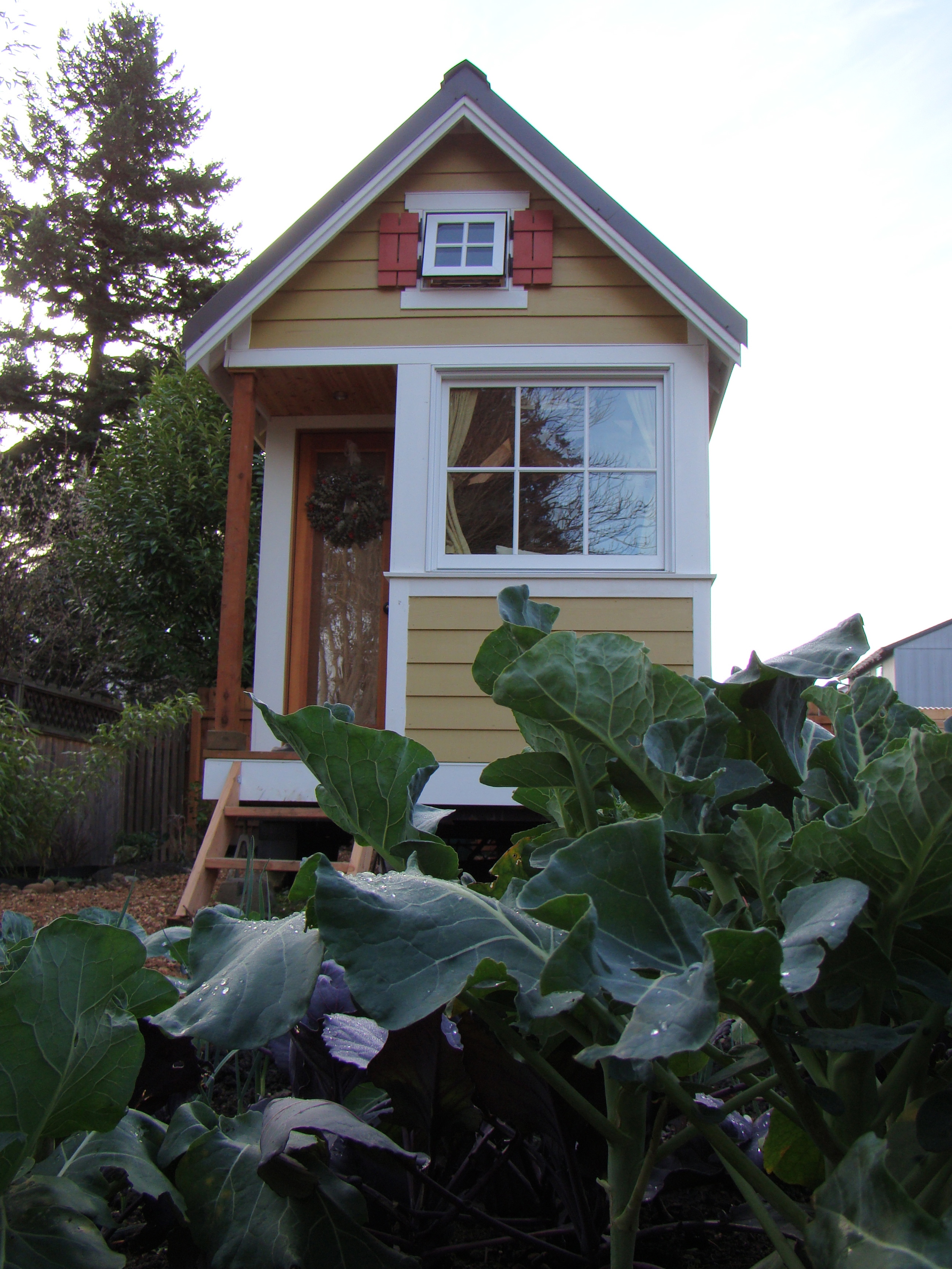 Last weekend I returned to the two-bedroom bungalow I own in Walla Walla to transition it over for new tenants. It was a long, hot weekend with temperatures reaching 102 both days. I found myself reminded both how much I love my house and how much time and energy it takes to maintain a piece of property. What a difference there is between caring for my two-bedroom bungalow and caring for tiny house on wheels I rented for ten months!
Last weekend I returned to the two-bedroom bungalow I own in Walla Walla to transition it over for new tenants. It was a long, hot weekend with temperatures reaching 102 both days. I found myself reminded both how much I love my house and how much time and energy it takes to maintain a piece of property. What a difference there is between caring for my two-bedroom bungalow and caring for tiny house on wheels I rented for ten months!
I purchased my bungalow in a fantastic tree-lined neighborhood in late 2007, just before the housing market took a nosedive. For four years it was my home, sweet home. The house itself is charming with arched doorways, coved ceilings, wood floors, beautiful original 1920s windows, and a wooden kitchen countertop with a drain board. However, it was really the location that convinced me this was the right house for me. My garden cottage was just a few blocks from my job at Whitman College and a short walk to downtown Walla Walla along tree-lined streets. There’s a duck pond across the street and a creek running through the back. I also have fantastic neighbors – the kind of neighbors who stop to chat, who keep an eye out for each other, who trade garden and pet care when the others are camping, who throw an annual block party in the summer and a holiday party in the winter, who help each other out during a windstorm that drops trees on houses and cars.
I learned an enormous amount about building science, remodeling, and retrofitting as I worked on water and energy efficiency projects. I insulated the attic, walls, and crawl space, replaced inefficient windows and doors, installed Energy Star appliances, repainted with low-VOC paints, and added programmable thermostats, an exhaust fan, and a ceiling fan for improved indoor air quality. I dug my own trench when my water main broke and had to be replaced. We decided to replace the entire plumbing system while we were at it. With the help of some talented folks I also tore out a wall, relocated the bathroom plumbing, and moved an exterior wall to create a laundry nook off the bathroom for a stacked washer and a dryer I could use during Walla Walla’s foggy months. (It turns out the chain link fence which I never liked much came in handy for drying clothes outside during nine months of the year. It was also great for growing peas and beans!)
Over the course of three summers I transformed a weedy and barren landscape into a vibrant food forest by tearing out my lawn and planting vegetables and flowers. I loved sitting on the front patio I created, behind a screen of sunflowers and ruby red dahlias, sipping homemade grape juice, watching the bees and butterflies, and plotting to preserve the bushels of pickling cukes and tomatoes overflowing from my raised garden beds. I enjoyed lounging in a hammock under the solar trellis I built, which provides shade for the southern side of the house, support for my tomato “trees,” and may someday also support solar panels. I delighted in selecting seeds, planting my ten dwarf fruit trees, a wildflower meadow, and a variety of berry bushes and Japanese maples. I marveled at how quickly the sage, thyme, oregano, chives, and valerian filled in among the flowers and trees. I built a chicken coop and run and raised chickens from day-old chicks. I also learned to identify Calliope and Rufus hummingbirds as well as several of the finches that frequented the garden. I liked watching the bats come out at night and listening for the hoots of the screech owls. Once in a while I’d even see a great blue heron or a hawk near the creek.
Homeownership brought me great satisfaction, so it was difficult to leave my beloved abode when I moved to Portland to study urban planning. However, I knew a house is only sustainable in the context of its community. Our transportation, food, and educational systems all matter, too. Walla Walla is a resilient community in many ways, with great potential to be more sustainable. My time working with sustainability initiatives in Walla Walla eventually convinced me it was time to pursue a professional degree in urban planning. After several years on the board of directors for a food cooperative, the Sustainable Living Center, and the Sustainability Advisory Committee for the City of Walla Walla, I realized it was time to take a bigger step towards my life goal of creating more sustainable community. I wanted to focus my attention on the big picture, not just making one very small place more beautiful. As I departed for Portland I was glad to leave my garden bungalow in the hands of fantastic tenants and under the watchful eye of caring neighbors. I’ve been looking forward to heading back to Walla Walla with a tiny house I can park in my nice long driveway. I like the idea of having the flexibility of renting out one and living in the other, depending on which one suits my needs at any given time.
Yet, last weekend as I spent a two long, hot Walla Walla summer days scrubbing floor boards behind the stove and fridge, doing paint touch ups, and tidying up the yard, I was shocked by the reminder of how much work it is maintaining an 830 square foot house on a 50x100 lot! The four years I lived in my bungalow I – like my wonderful neighbors – spent most evenings and weekends either doing home improvement projects or working in my garden. I poured heart, soul, time, energy, and money into my property. Over the years, whenever one of my neighbors had a homeownership disaster (the dishwasher breaking, the basement flooding, the windstorm blowing shingles off the roof, etc.), we would joke, “Oh, the joys of homeownership!” There are, of course, many joys to homeownership, but these were not them! There seems to be an understanding among homeowners that these personal disasters are outweighed by the personal delights of owning a home. A year ago I would have agreed.
But now I’ve lived in a tiny house for ten months. Now I’ve lived in a city that prioritizes sustainability initiatives. Now I know the benefits of providing access without requiring ownership. Portland has invested in its public transportation and bike lanes, revised policy to accommodate urban farms, and created a citywide compost system. It’s the only city I know of that has marked skateboard routes throughout the city. Now that’s an endorsement for active transportation! Meanwhile, the tiny house I rented for ten months took very little work. It is well-built and simple, requiring little maintenance and just a few minutes of cleaning each week. The reminder of how much work it is to maintain even a small home on a small lot has me thinking again about how building small is even more powerful when it's combined with community. My perspective has shifted over the course of the past year. I’m more fascinated than ever by the prospect of Tiny Cohousing, a collection of little homes that share in the benefits and responsibility of caring for a little place in this big world.





